Kraków 2022-12-31
Electric locomotives ET22.
ET22 is a Polish heavy locomotive produced in the period 1969 - 1989, in the PaFaWag factory under the designation 201E. A total of 1,184 units were produced for PKP and 23 locomotives for Morocco.
The ET22 locomotive was developed in the railway construction office in Poznań. The project was based on the experience of operating the ET-21 locomotives, which had been in use since 1957. The locomotive was initially marked 7E and was eventually marked 201E. Due to the long period of production, the locomotive underwent several modifications.
Until 2001, ET22 locomotives were used by PKP, and in 2001, as a result of changes, all of them went to PKP Cargo. In the following years, many locomotives went to other carriers operating in Poland. Since 2005, some ET22s can travel on the railway routes of the Czech Republic and Slovakia.
Construction development.
In 1964, the Central Design Office of the Rolling Stock Industry, now the Rail Vehicles Institute in Poznań, began developing a new heavy electric locomotive. To speed up the work and take advantage of existing solutions and components, the 4E (EU07) design was used. The designers saw the future locomotive as universal, not just freight. The final decision was taken by the party authorities in Warsaw - it is to be ET22. In 1966, the project received the designation 7E. During the work, the designation was changed to 201E. The PaFaWag plant in Wrocław was appointed as the manufacturer. The first two prototypes were also built there: ET22-001 and 002. The prototypes for testing were sent to the Kraków Prokocim locomotive depot.
In 1971, the first 10 series ET22 locomotives (003 - 012) were built. At the same time, the production of ET21 locomotives was completed. About 90 locomotives were built annually. In the period 1975–1976, PaFaWag produced 23 locomotives of type 201Eg (ET22) for Morocco. A total of 1,207 electric locomotives were built.
In the period 1971 - 1973, experiments were carried out on changing the gear ratios of electric motors. They wanted to obtain a freight electric locomotive with a design speed of 125 km/h and a fast electric locomotive with a speed of 160 km/h. In 1978, a modernized locomotive body suspension was developed.
Despite the possibility of driving in multiple traction, ultimately the ET22 locomotives did not cooperate with each other. Their high power caused the electrical devices in the second locomotive to burn and the screw couplings to break. It was practically the end of the possibility of compiling trains from the wagons of that time. Due to the high tractive power, the electric locomotive is colloquially called "Bull".
By 1997, 33 ET22 locomotives had been removed from the stock. By 2000, another 192 electric locomotives were removed from the status quo. This does not mean, however, that all locomotives were scrapped. Many of them are waiting for better times. When PKP Cargo was established in 2001, it took over 955 ET22 locomotives, i.e. all of them, including EU07. As PKP IntrCity did not have any locomotives, it had to sublease locomotives from PKP Cargo. As a result, passenger trains were often pulled by ET22 electric locomotives, which was not inappropriate given the characteristics of the ET22.
At the beginning of the 21st century, there was a need to modernize the electric locomotives. In 2004, one locomotive was modernized in Gliwice, which after tests became a prototype for the modernization of subsequent electric locomotives. Since 2007, more locomotives have been rebuilt. Several dozen ET22 locomotives were modernized.
From 2010, ET22 locomotives were handed over to other carriers in the country.
In 2007, the first ET22 locomotive entered the Czech Republic. In 2008, the first locomotive entered the routes in Slovakia. In 2016, PKP Cargo had 24 locomotives of the ET22 series approved for traffic in the Czech Republic.
Construction ET22.
The body and the frame are a whole and a self-supporting structure made as welded. The sides of the body in the upper part are inclined to the center to maintain the dimensions of the gauge, similar to the SU45 locomotive. The roof in the middle part is removable for ease of use. There are two pantographs on the roof. The locomotive starts and ends with driver's cabs. The machinery compartment consists of three parts. The high-voltage compartment is located in the central part of the locomotive. The locomotive has two three-axle bogies. Each trolley has three EE541 motors. The total continuous power is 3 MW. The gear ratio of the engines is 79:18. The locomotive pulls trains weighing up to 3,500 tons.
ET22 locomotives for PKP were painted light green and dark green as standard. The bogies and other equipment below the locomotive's underframe were painted black. In the period 1989 - 1999, the fronts of the locomotives were painted yellow. The headstock of the mainstay was painted red.
During serial production, the appearance of the sides of the locomotive body changed. There were generally two side patterns. first pattern; There is no air intake louver in the upper part. There are 4 ventilation louvers on the sides. There is one double window halfway down the length of the locomotive, the upper section of which opens. In addition, there are two non-opening windows that illuminate the interior of the engine room. The entrance doors to the locomotive are in the sides on each side and are moved away from the front of the locomotive. There are windows in every door. Each cabin is equipped with 6 windows; two at the front, two at the corners and two at the sides. Round headlamps, ordinary. During the repairs, the headlights were converted to the so-called ZEZ. Some locomotives received overlays on the bumpers.
The second locomotive side pattern: There are 7 air intake louvers in the upper part. On the sides are another 9 ventilation louvers. There is one double window halfway down the length of the locomotive, the upper section of which opens. The entrance doors to the locomotive are in the sides on each side and are moved away from the front of the locomotive. There are windows in every door. Each cabin is equipped with 6 windows; two at the front, two at the corners and two at the sides. Round headlamps, ordinary.
Data T-T ET22:
Co'Co' axis system. Length 19.24 m. Width 3.00 m. Height 4.46 m. Service weight 120,000 kg. Axle load 20,000 kg. Wheel diameter 1.25 m. Power supply 3,000 V. Motor type EE541. Engine gearing 79:18. Design speed 120 km/h. Oerlikon brake system. The locomotive pulls trains weighing up to 3,500 tons.
Selected ET22 locomotives.
ET22-304 - built in March 1977. Subsequently, she served in: Ostrów Wielkopolski Leszno, Czechowice Dziedzice, Katowice. Since 2001 in PKP Cargo. Repairs were made at ZNLE Gliwice. In 2016, the locomotive was parked in Kraków Prokocim as a reserve.

ET22-344 - built in August 1977. Subsequently, she served in: Dęblin, Lublin, Tarnowskie Góry, Katowice. Since 2001 in PKP Cargo. Repairs were made at ZNLE Gliwice and ZNTK Poznań. In 2017, the locomotive was parked in Kraków Prokocim as a reserve.
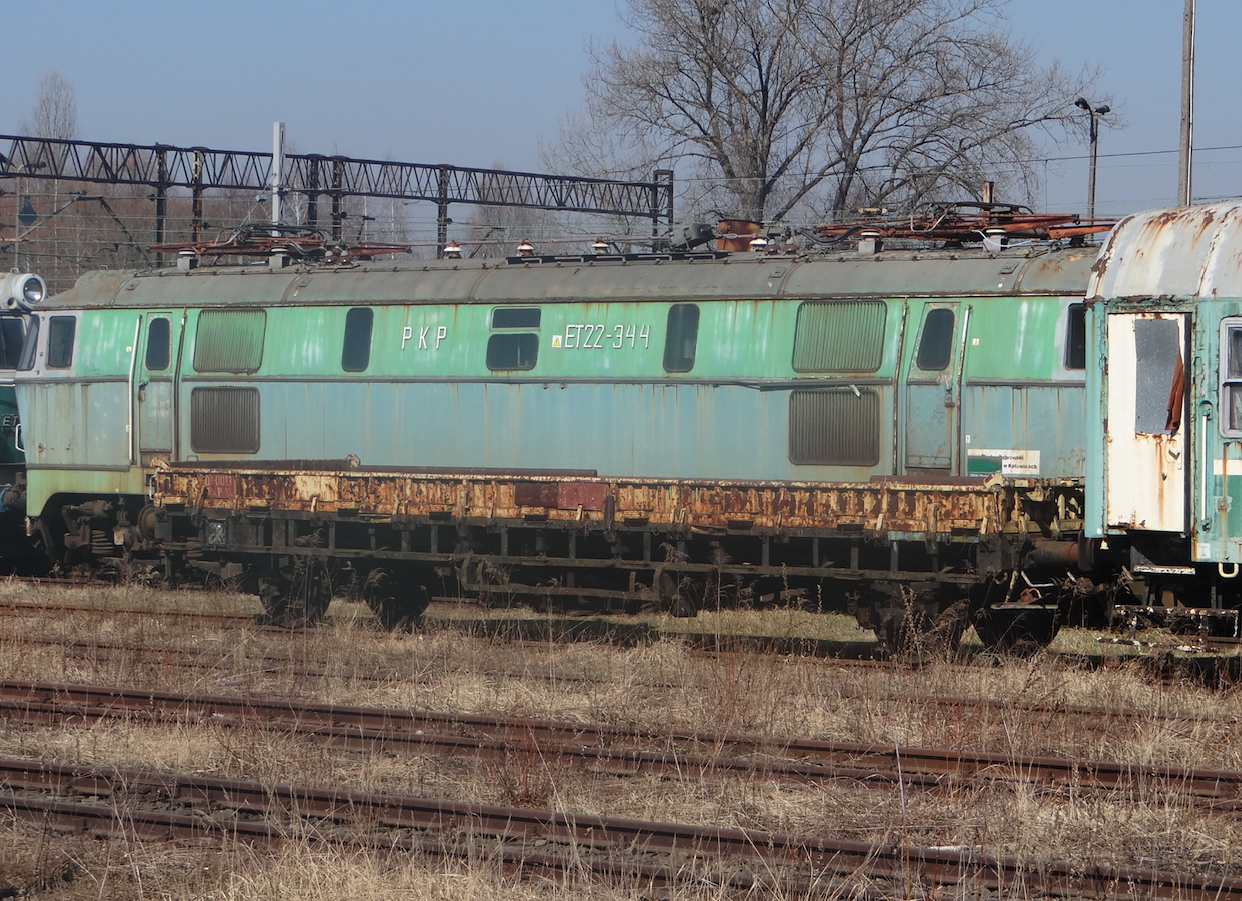
ET22-390 - built in February 1978. Subsequently, she served in: Częstochowa, Łazy, Katowice. Since 2001 in PKP Cargo. Repairs were made at ZNLE Gliwice and ZNTK Poznań. In 2017, the locomotive was parked in Kraków Prokocim as a reserve.
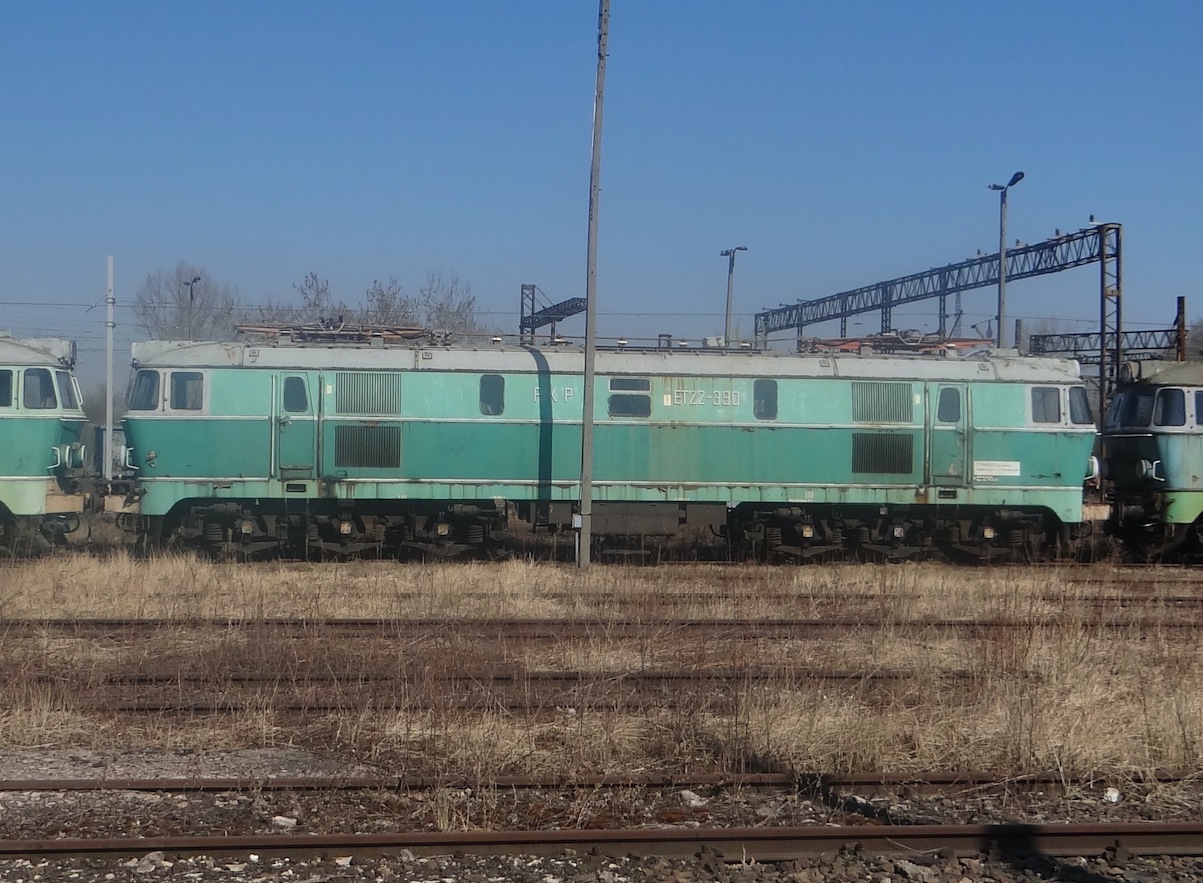
ET22-621 - built in November 1980. Subsequently, she served in: Ostrów Wielkopolski, Poznań Franowo, Słupsk, Gdynia, Łazy, Katowice. Since 2001 in PKP Cargo. Repairs were made at ZNLE Gliwice and ZNTK Oleśnica. In 2017, the locomotive was parked in Kraków Prokocim as a reserve.

ET22-708 - built in January 1981. Subsequently, she served in: Łazy, Katowice. Since 2001 in PKP Cargo. Repairs were made at ZNLE Gliwice, ZNTK Lubań and ZNTK Oleśnica. In 2016, the locomotive was parked in Kraków Prokocim as a reserve.
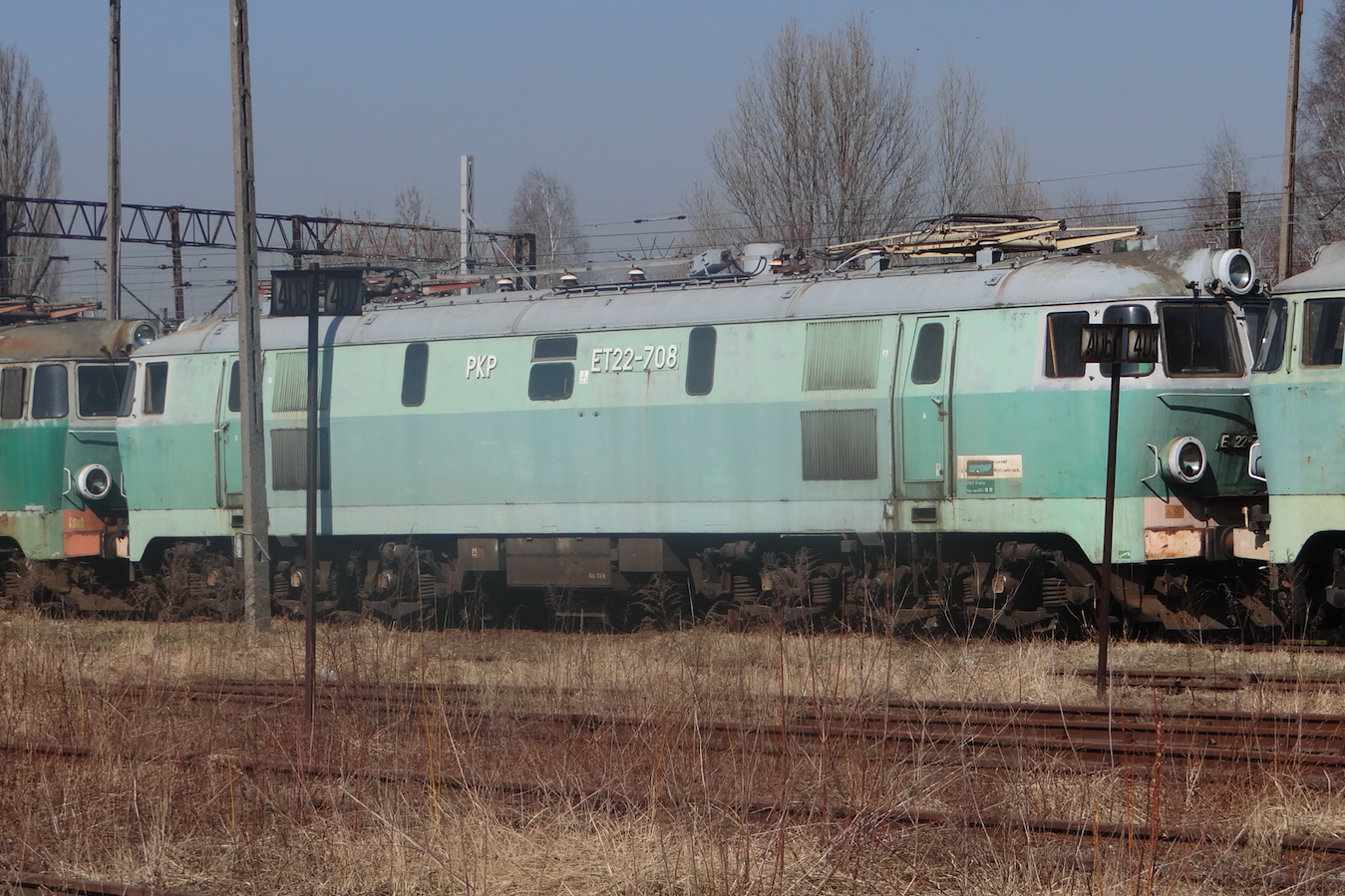
ET22-795 - built in May 1983. Subsequently, she served in: Czechowice Dziedzice, Łazy, Katowice. Since 2001 in PKP Cargo. Repairs were made at ZNLE Gliwice. In 2016, the locomotive was parked in Kraków Prokocim as a reserve.
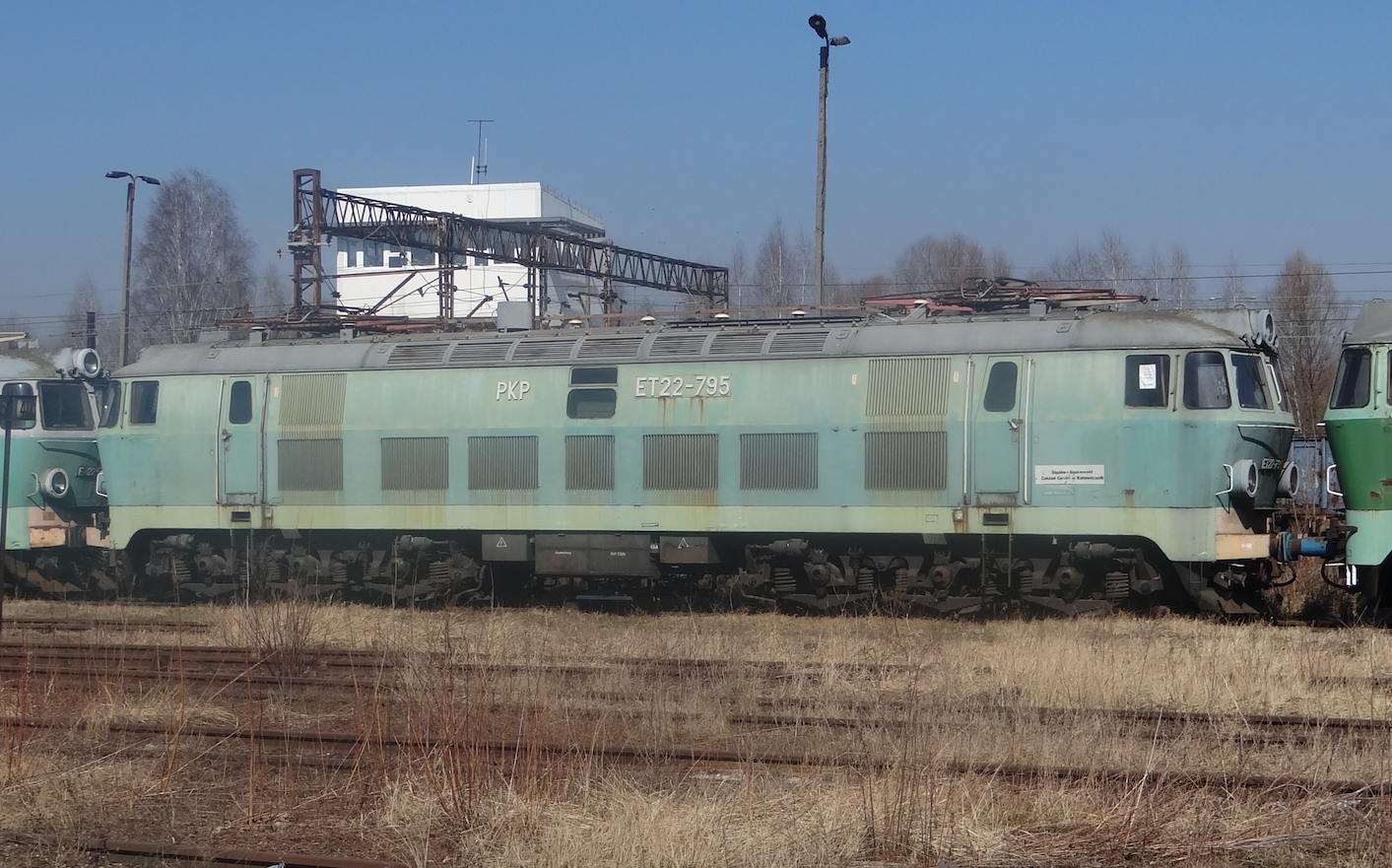
ET22-879 - built in December 1984. She subsequently served in; MD Częstochowa, MD Tarnowskie Góry, MT Łazy. Since 2001 in PKP Cargo. Then she worked in Katowice. In 2016, the locomotive was parked in Kraków Prokocim as a reserve.
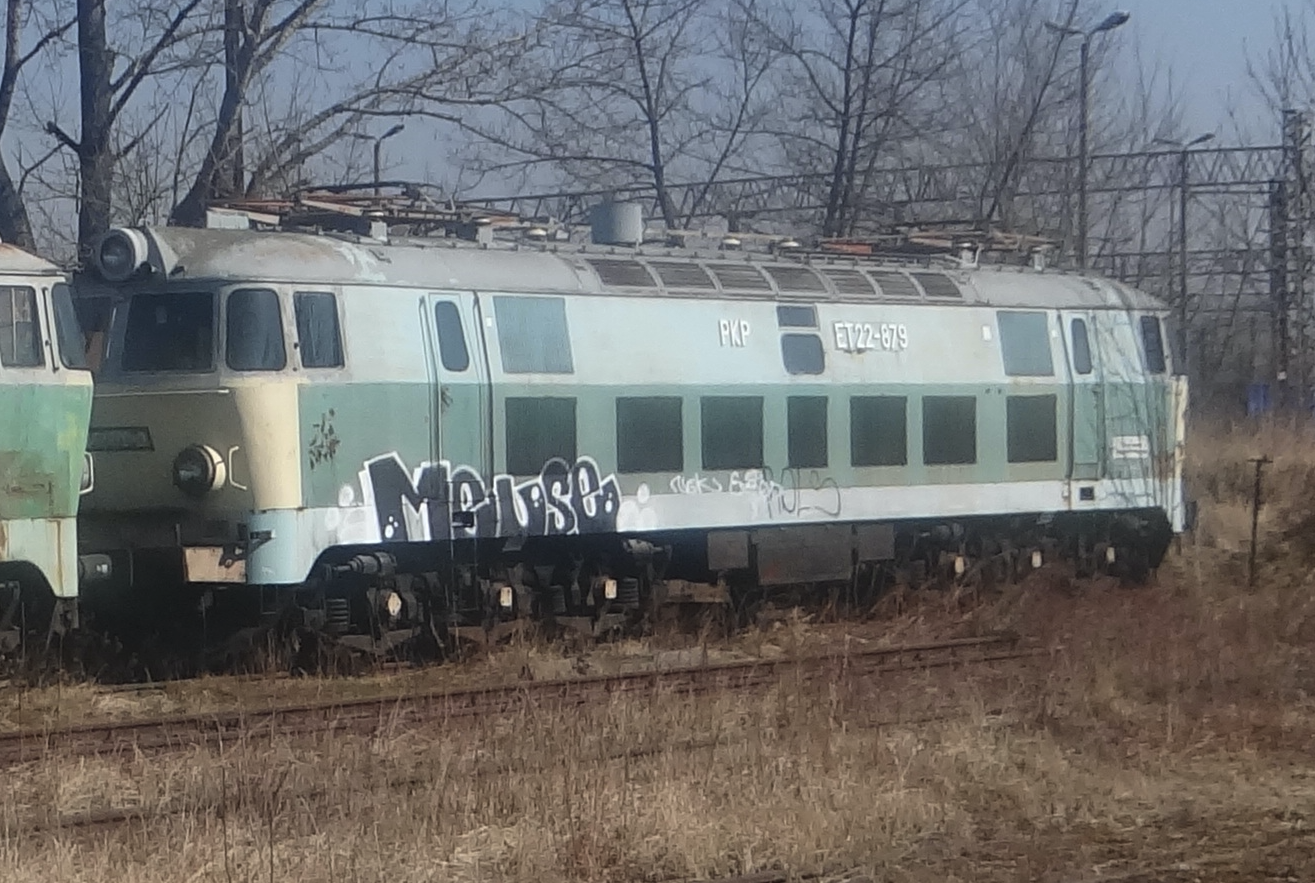
ET22-957 - built in January 1986. She subsequently served in; Wroclaw, Kluczbork, Tarnowskie Góry, Katowice. Since 2001 in PKP Cargo. In 2018, the locomotive was parked in Kraków Prokocim as a reserve.

ET22-987 - built in August 1986. She subsequently served in; MD Warsaw Olszynka Grochowska, MD Warsaw Odolany, MD Bialystok, MT Łódź. Since 2001 in PKP Cargo. She continued to serve in: Łódź, Katowice. In 2005, the last renovation was carried out in ZNTK Oleśnica. In 2016, the locomotive was parked in Kraków Prokocim as a reserve.
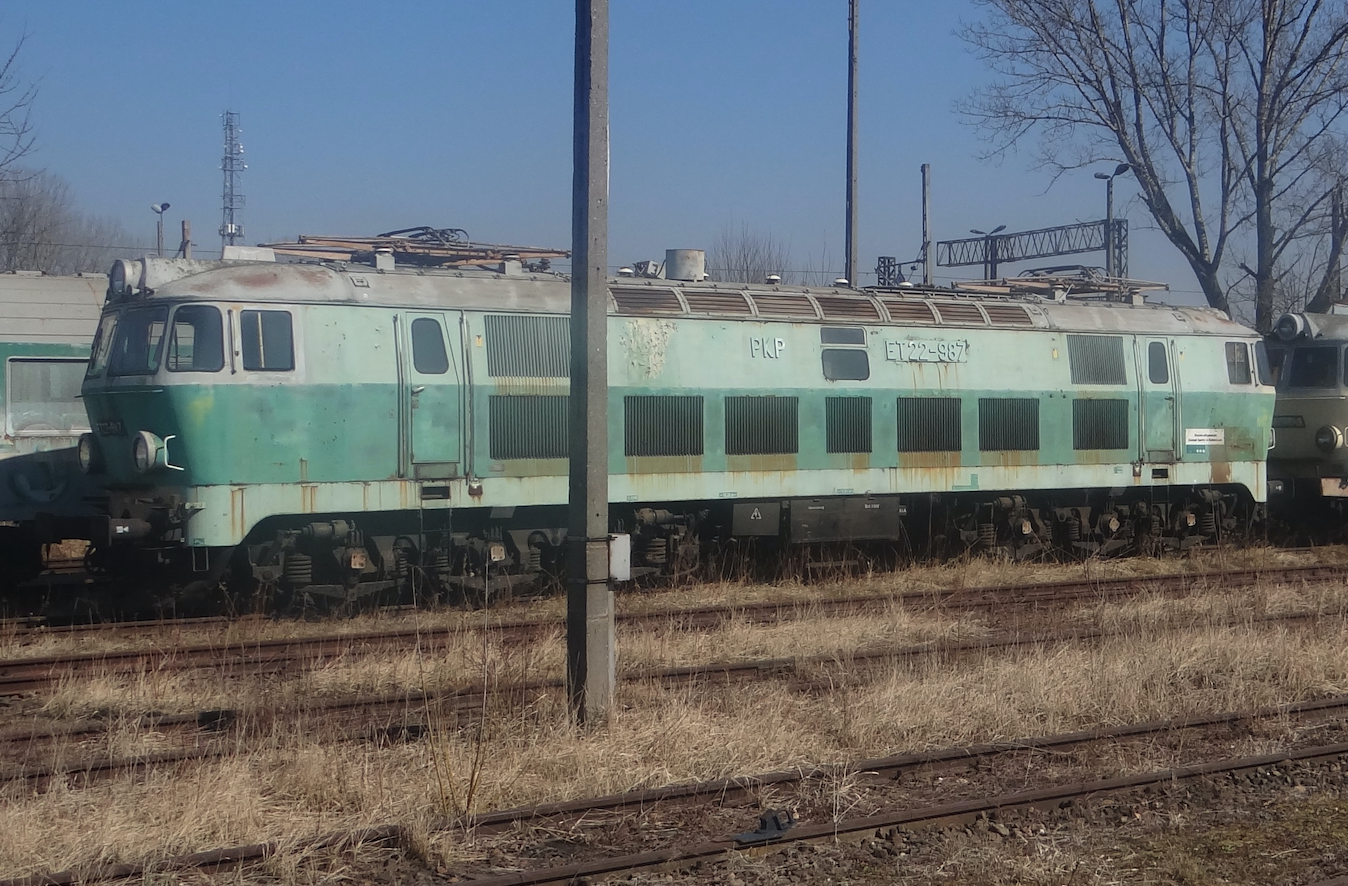
Written by Karol Placha Hetman
